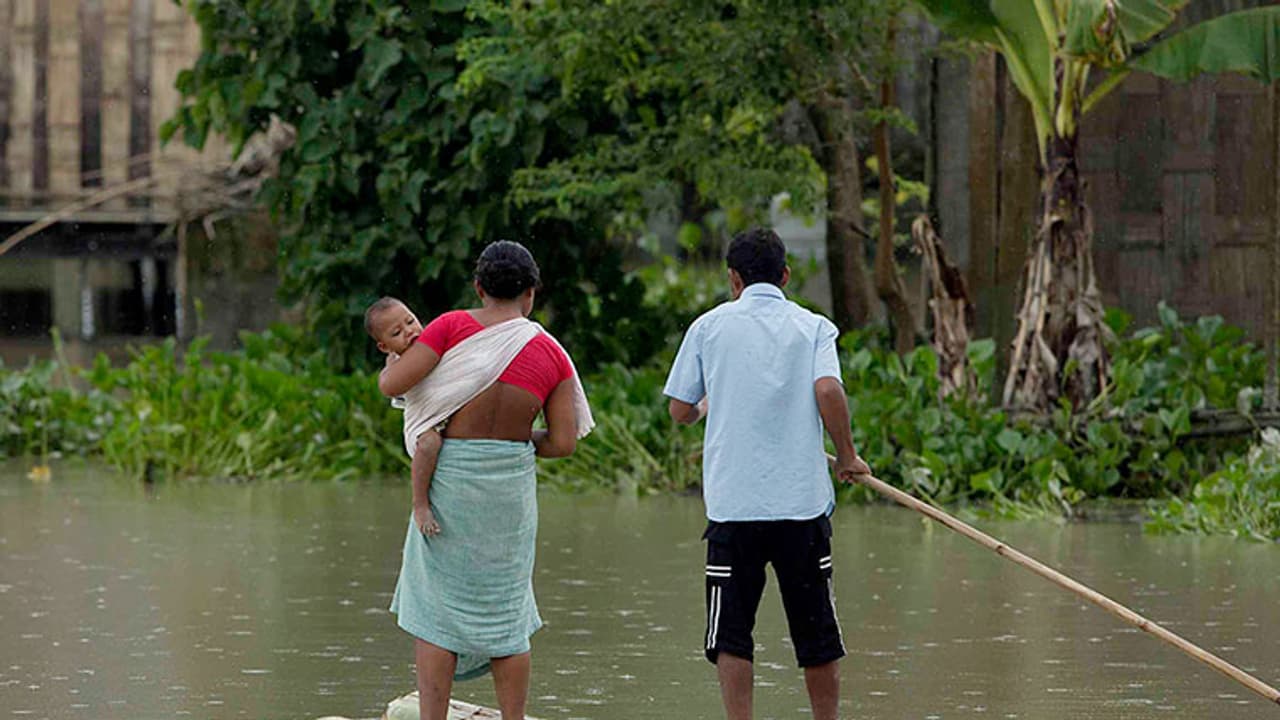About 31 have died, more than 37 lakh have been affected and around 5 lakh displaced in the Assam floods. Union Home Minister Rajnath Singh while reviewing the Assam flood said it is not a 'national calamity' People in Assam have been demanding for decades that flood should be treated and declared as a national problem.
Eleven states have been hit by flood this year but Assam is one of the worst hit. About 31 dead, more than 37 lakh affected and around 5 lakh displaced. Two lakh hectares of cropland have gone under water. The good news is the water is receding in many parts of the state.

Bihar has also been affected badly.
Union Home Minister Rajnath Singh while reviewing the Assam flood said it is not a ‘. Flood is a natural phenomenon but the tragedies are manmade. I suppose, what he meant was ‘national calamity’. The words ‘natural’ and ‘national’ are not important here. The government’s distinction of the usage of ‘disaster’ and ‘calamity’ is essentially about money and accountability. Disasters are the responsibility of the respective states though the centre helps in a very big way but calamity puts the onus on the centre.
The former Prime Minister Manmohan Singh who represented Assam in the Parliament (though he hardly did) had come up with the idea of a single water authority to manage flood but with stiff opposition from other states that thought upper riparian states would be favoured the idea was rejected.
People in Assam have been demanding for decades that flood should be treated and declared as a national problem.
The Great Earthquake of 1950 changed the topography and made the Brahmaputra even more susceptible to flood. The river has become unstable and shifting of river channels and erosion has become more frequent. More than 40% of Assam’s landmass is said to be flood-prone and that accounts to some 9.6% of the country’s flooded area. But flood in the state has always been a seasonal management. There are studies and suggestions that don’t sit well with government programmes.
2015 flood was very poorly managed because the then government was busy preparing for 2016 elections. The excuse for this year’s poor management would be because it is a debutant government and is still getting a foothold. The fact is that flood is a massive money making opportunity.
The 450 embankments across the state are like milking cows that must be repaired each year so a tender is floated and contractors pitch and money exchanges several hands. Long term solutions that Rajnath Singh spoke of, goes against the government –contractor- mafia nexus. Flood relief expenditure that comes in several hundreds of crores can be misused. Distribution of relief materials can be good photo opportunity for politicians. In that sense flood misery is a lot manmade.
The former Chief Minister Tarun Gogoi’s callous comment a few years ago comes in the backdrop of these facts; “the people of Assam have to just get used to living with flood”.
Whether it is a calamity or a disaster, the semantic convenience cannot be dictating lives of millions of people who have lost home, crop, land and even dignity. The receding of water doesn’t mean lives go back to normal. Many will never find their way back home.
Kishalay Bhattacharjee is a senior journalist and author. His most recent book is Blood on my Hands: Confessions of Staged Encounters (Harper Collins 2015). The views expressed here are his own.
